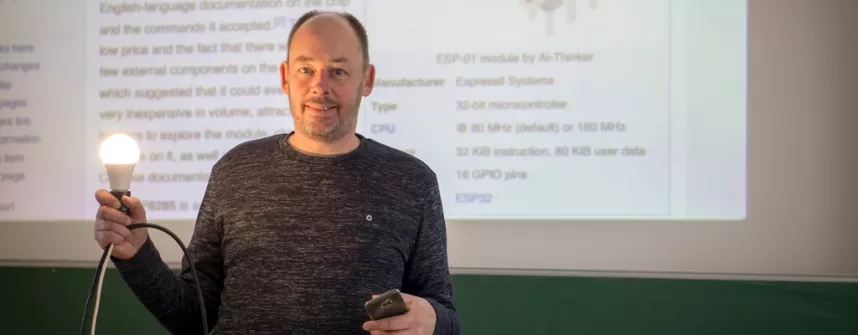Better protection against cyber-attacks: Jacobs University Bremen part of the European research network CONCORDIA
March 29, 2019
It's all about more security for the digital society. 46 partners from both academia and industry are involved in CONCORDIA, the European network for more cybersecurity, including the Computer Networks and Distributed Systems research group of Jacobs University led by Dr. Jürgen Schönwälder, Professor of Computer Science. The EU funds the project, which develops concepts, tools and products for cyber security, with 16 Million Euro EU, a further 7 million euro in additional funding is contributed by national authorities and the industry. The research group at Jacobs University is coordinating research activities related to device-centric security within the project.
We have a growing number of devices around us in our everyday life that contain small embedded computer systems. Many of these devices are able to access the Internet. They can be found in modern cars, in the medical health system, or in our "smart" homes. Using voice-control systems like Alexa to change settings of smart light-bulbs or other electric devices is getting popular. It is meanwhile possible to buy smart light-bulbs for 15 euros that have an embedded computer system and that are able to access the Internet via the wireless home network in order to be managed by voice-control systems like Alexa.
, Professor Jürgen Schönwälder heads the Jacobs University’s research group on cybersecurity (source: Jacobs University)While this technology enables entirely new ways of interaction with our environment, there are several important security issues that need to be taken care of. A light-bulb accessing a home network, for example, will store credentials (e.g. a password) that are needed to access the home network. Is this data stored in such a way that it remains protected even when the light-bulb is decommissioned or sold over eBay? Or is this information perhaps even communicated to online cloud services the user may not be aware of? With whom is the light-bulb allowed to communicate in general? Is the software on the light-bulb static or does it enable updates to fix security flaws? If it supports software updates, how does the light bulb make sure that the new software is from a trusted source?
A general underlying question is how can we ensure that the software running on embedded devices is the software that is expected to run on these devices (and not modified by third parties to index, for example, the photo collection accessible on your home network). Finding answers to these questions is a goal of the research undertaken at Jacobs University as part of the CONCORDIA project.
Further questions can be addressed to:
Jürgen Schönwälder | Professor of Computer Science
j.schoenwaelder [at] jacobs-university.de | Tel.: +49 421 200-3587
https://www.concordia-h2020.eu/
